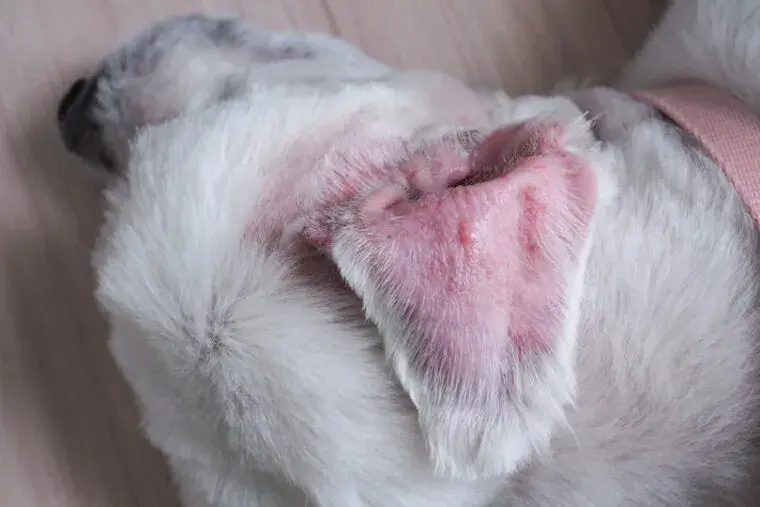Spotting and Solving Ear Hematomas: Essential Grooming Tips for Every Dog Owner
- Kristy Zan
- Feb 16, 2024
- 3 min read
Understanding Ear Hematomas in Dogs
Ear hematomas, or aural hematomas, occur when blood collects between the ear cartilage and skin, causing the ear flap to swell. This condition can transform a dog's normally thin, flexible ear into a thick, spongy appendage. It's a common issue that can arise from or be exacerbated by grooming practices, particularly in cases involving matted ears.
Causes Behind Ear Hematomas

The primary cause of an ear hematoma is trauma to the ear, often from excessive head shaking or ear scratching. Dogs may engage in these behaviors due to irritations such as infections, allergies, bite wounds, or foreign bodies like ticks or grass seeds lodged in the ear canal. In addition, underlying health issues like clotting disorders can predispose a dog to developing hematomas without any evident trauma.
Matted Ears and Hematomas
When a dog's ear becomes severely matted, the grooming process to remove these mats, often involving shaving, can lead to additional complications. The act of shaving can stimulate blood flow to the surface of the skin, which, in cases of underlying irritation or trauma, may contribute to the formation of a hematoma. Interestingly, the hematoma may not be immediately apparent; it can develop under the skin and only become visible once it "pops," leaving behind a scab. This delayed presentation underscores the importance of handling matted ears with extreme care.

Prevention and Early Detection During Grooming
Preventive measures are key in avoiding ear hematomas. Regular ear checks and cleaning can help identify and address irritants before they lead to excessive scratching or shaking. During grooming, be gentle when handling your dog's ears, especially if dealing with mats, and look out for signs of distress or discomfort that could indicate an underlying issue.
Treatment Options for Ear Hematomas
Treatment typically involves surgery to drain the collected blood and may include sutures to prevent the space from refilling. Some veterinarians may opt for less invasive treatments like drainage and glucocorticoid instillation, which can resolve the issue in approximately 50% of cases. Addressing the underlying cause, such as an infection or allergy, is crucial to prevent recurrence.
Key Takeaways for Dog Owners
- Regular Ear Maintenance: Incorporate ear checks and cleaning into your grooming routine to catch potential issues early and avoid matting.
- Gentle Handling: Exercise caution when grooming, particularly with matted ears, to minimize the risk of causing a hematoma.
- Seek Professional Advice: At the first sign of an ear problem or if you're unsure how to handle matted ears, consult with a veterinarian or professional groomer.
- Understand the Risks: Recognize that grooming activities, especially dealing with matted ears, can inadvertently lead to ear hematomas if not done carefully.
Conclusion
Ear hematomas can be a painful and uncomfortable condition for your dog, but with proper grooming techniques and regular ear care, you can significantly reduce the risk of this issue arising. Matted ears require particular attention to prevent complications like hematomas. Always stay vigilant for any signs of ear discomfort in your pet and consult with a veterinarian for the best course of action if problems do arise. Keeping your dog happy, healthy, and well-groomed is a responsibility that comes with its challenges, but understanding how to prevent and treat conditions like ear hematomas, especially in the context of matted ears, is a step in the right direction.





Comments